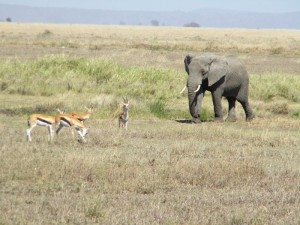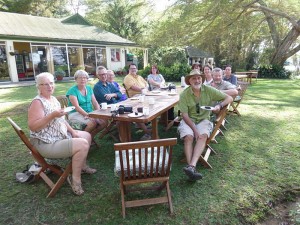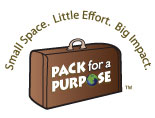Kenya is an extraordinary country for a self drive safari and wildlife viewing boasting over 50 National Parks and Reserves. So you will be forgiven if you imagine Kenya to be vast plains littered with wildlife happily grazing on the savannah, lions shrouding in long grass stalking unbeknown to their prey and large herds of elephant gracefully gliding across the valley. This is all true. But this is not all Kenya has to offer the intrepid traveller.
Kenya offers everything from adventure activities like white water rafting near Mt Kenya to sail boarding on the magical Swahili coast, trekking to the peak of Mt Kenya to a multiday trek across Masai Land, various desert safaris around Lake Turkana to a camel trek near Laikipia and Samburu. Kenya has it all from dramatic mountains, vibrant deserts, magnificent savannah plains and spectacular tropical beaches. All packaged into a relatively small diverse country the perfect destination for a self drive safari.
The capital, Nairobi has changed immensely over the past decade transforming into a cosmopolitan city with western style shopping malls, supermarkets, restaurants and speciality stores offering everything from hip designer shoes, traditional German sausages to artisan bakeries. Even with this revolution Nairobi still oozes traditional African charm with colourful local markets selling everything from second hand clothes to pots and pans, flamboyant street peddlers offering “genuine” ray bans and the outgoing fast food vendors hawking everything from boiled eggs to samosa to slices of watermelon.

Game parks in Kenya offer sensational game viewing and safari opportunities for families, groups and self drivers
Kenya’s number 1 game park is clearly the Masai Mara National Reserve, situated in the south it is an extension of the Serengeti National Park in Tanzania. The Masai Mara National Reserve is the home of the great Wildebeest migration when an incredible 2 million wildebeest and zebra cross the Mara, Talek and San Rivers while crocodiles sit patiently waiting for their chance to feast. While the migration is a spectacular occasion the Masai Mara is an incredible game park all year round with enormous resident herds of antelope, zebra, eland, giraffe, elephant, buffalo, wildebeest and topi as well as established prides of lions, well fed cheetahs, sleek leopards and shy rhinoceros.
If you prefer to get off the beaten track and explore less visited game parks then Kenya has a great range of options from the dramatic Aberdare National Park with game walks and sensational fly fishing, Kakamega Forest Reserve boasting hundreds of plant and bird species as well 400 types of butterflies and 7 varieties of primates, Saiwa Swamp National Park is home to the rare sitatunga antelope and endangered black and white colobus monkey.
Ol Pejeta Conservancy is home to 3 out of the 4 last Northern White Rhino on the planet as well housing Southern White Rhino and Black Rhino. It also features a Chimpanzee Sanctuary and the Big 5 as well as all sorts of wildlife, a range of activities on offer from lion tracking, day and night game drives, bush walks and bird watching. Ol Pejeta Conservancy is a perfect destination for families.
Mt Kenya is Africa’s second highest mountain at an impressive 5199m (17,057ft) and quite different terrain to Mt Kilimanjaro in Tanzania. There are 3 snow-capped peaks, the highest peaks, Batian and Nelion can only be climbed by experienced mountaineers while the third peak Point Lenana can be trekked by anyone. Allow around 5 days for the trek.
Lake Turkana should only to be tackled by the true adventurer, as beautiful as the desert area is there are limited roads which are in exceptionally bad condition. There are few villages and even fewer towns and we highly recommend taking a local guide who knows the area, speaks the language and will be a godsend if you have any mechanical problems (which is more than likely!). However for those who make the journey will be amazed by the barren desert and the spectacular sight of the jade blue lake that seems to go on forever.
The Swahili coast is every beach lover’s utopia with beautiful powder white beaches, calm ocean waters and palm trees dotting the coastline this area should not be missed on a self drive safari in Kenya. Scattered along the coastline are a number of gorgeous beaches with everything from campsites to 6 star luxury resorts. The coastal region is home to a number of historical sites from the Arab trading years and protected marine parks with Tsavo National Park not too far inland. The most popular beaches frequented by international tourists include Diani, Tiwi, Kilifi, Watamu and Malindi.
If it is beach, history and peace you are after then head to Lamu Island. Lamu Island is Kenya’s oldest living town dating back to the 14th century, and little seems to have changed since. The Arab architecture is breath taking; the views over the ocean unbelievable and the people are the friendliest of anyone in Kenya. The island is accessible only by boat and still to this day motorised vehicles are banned on Lamu so donkeys, bicycles and foot remain the only form of transportation.
Kenya can be a little tricky to navigate. There is a severe lack of road signs and the local maps are not very accurate. Even Tracks for Africa software is not overly accurate in Kenya. Over the past 2 years or so there have been a number of new ring roads built around the city of Nairobi and more are under construction which has certainly helped with the congestion problem.
Africa Expedition Support offer a 7 day accommodated Kenya Migration Safari for those who want to self drive but with the added support of a lead vehicle and crew who take care of all the day to day activities. If you have more time and want to visit more places in Kenya we can offer a tailor made guided self drive that takes you everywhere you want to go.
Kenya is a magical country to explore however there are also so many other amazing African countries offering wonderful experiences and incredible diversity. It seems a pity to travel all this way to only visit one African country!
Africa Expedition Support offer a number of guided self drive safaris that not only explore Kenya but also a number of other neighbouring countries. In just 14 days you can tour Kenya and Tanzania and not only enjoy the highlights of Kenya but also explore the Serengeti National Park and Lake Manyara National Park in Tanzania!
For those with more time on their hands how about joining our guided self drive safari 26 day Kenya to Zambia, 7 week Serengeti to Cape Town, 8 week Kenya to Cape Town or 10 week Egypt to South Africa!
Kenya
The northern Kenyan roads lived up to every expectation… Dusty, very dusty …rough…very rough…Slow going…very slow.
This road is appropriately named “the road to hell”; every guide book says it. But you don’t really believe it until you drive it. The first 250kms are slow going – maximum speed 25km p/hr over sharp rocks that shred tyres with ease blended with deep holes and ruts from the previous seasons rains. No words can describe the roughness and the toll this road takes on the driver. Shock absorbers overheat, tyres blow…all to be expected Steve tells us. Aware of the road conditions everyone takes it easy however even driving this road slowly one vehicle still blows 2 tyres on one side – a sharp rock is to blame. A couple of vehicles blow shocks but considering there are 10 vehicles in total the damage was minimal.
We slowly bounce our way to the little town called Marsabit. A dusty service town in the middle of nowhere. We spend the night just outside Marsabit at a little campsite called Henry’s Place. The campsite is on a running farm owned by a Swiss guy called Henry. Henry came to Kenya over 25 years ago as a missionary. He fell in love with the place and decided to call it home. On his farm he makes his own cheese and bread which was a pleasant surprise for the group to be served fresh warm muffins for breakfast.
We continued on the bumpy road toward Archers Post and the gateway to Samburu National Park. The dirt road ended after 100kms thanks to the Chinese who are tar sealing the road. The relief on everyone’s faces was evident as we bounced our way onto a brand new tar seal road. It was not long before we reached Archers Post – hot and dusty; the showers were a welcome relief.
We spent the following day exploring Samburu National Park. Our first real taste of African wildlife. The park is small in size but big on wildlife. Herds of elephants made their way to the river for an afternoon drink, zebras and antelopes grazed on the long savannah grass and lions kept cool under the shade of acacia trees. This is Africa and this is what we had driven 5,000kms to experience. The group feeling a little tired after the tiresome northern Kenyan roads spirits lifted immediately.
That evening we sat around the fire while local Samburu tribesmen and women showcased their traditional dancing skills. We enjoyed a (warm) beer and listened to everyone’s stories about their adventures in the park.
Christmas Day – we packed up camp early in the morning and made our way toward Nairobi, the Capital of Kenya. The drive took us from the hot plains of Samburu up into the highlands. We passed Mt Kenya on the way, which was kind enough to be in full view on this clear morning. A brief stop at the equator to celebrate entering the Southern Hemisphere and experience the water test! We made our final run into Nairobi knowing we all had a few days to rest while the vehicles were undergoing a major service.
We arrived into Karen Camp in Nairobi. Debs and Thiemo were there, the owners of the Company, and had ready a Christmas spread of smoked salmon, prawns, quiche, cheese platter, BBQ chicken, salads, nuts, fresh baguettes and Christmas cake all under the shade of colourfully decorated Christmas tree. We settled into our rooms, showered and got the dust out from behind our ears just in time to hear the champagne bottles popping.
We had 5 nights in Nairobi, a well deserved rest to recover from our 5000km drive. Most of the group took some time to visit the Giraffe Centre and hand feed Rothschild giraffes, David Sheldrick Elephant orphanage to see baby orphaned elephants play in pools of mud and take in some history at the Karen Blixen Museum. We all took advantage of the western supermarkets to stock up on essential supplies, enjoy coffee at Java Coffee house and take advantage of their free wireless internet and take some time to head to the movies. Some of the group dined at Carnivores Restaurant, once famous for their selection of game meat and various other world class restaurants in Nairobi.
Nairobi is certainly a cosmopolitan city boasting pretty much all the creature comforts of the Western world. However, like we have discovered so many times before there are still underlying issues with infrastructure with water and electricity shortages.
After a well deserved rest it was time to hit the road once again. Our first stop after Nairobi was Naivasha – a short 2 hour drive from Nairobi. We enjoyed a rather civilised high tea at Elsamere the home of Joy and George Adamson who are better known for the Born Free books and movies. An early morning walking safari through Green Crater lake and camping only metres from grazing hippos reminded us we really were in Safari country.
Our next stop was a short drive away to Lake Nakuru National Park. We entered the park and were blessed with animals everywhere. Lake Nakuru is famous for Rhino and we were lucky to see quite a few. We spent the afternoon exploring the park, stopping to look at giraffe, zebra, antelope, warthog, and thousands of pink flamingos. What an amazing park! We camped in the park by some waterfalls, throughout the night various curious animals wandered through the campsite. We spent a few hours in the morning driving around the park, the guide books are right; this is a wonderful park offering wildlife around every corner. Some of us were lucky enough to see lions in the park adding the icing to the cake.
With a change of pace we spent a couple of hours in Nakuru town at the local souvenir markets – we learnt that bargaining hard was in order of the day with prices dropping rapidly from the start asking price. A short drive to our haven for the night, Kenana, a local Kenyan farm. An amazing piece of earth with a working farm, diary and women’s knitting project.












